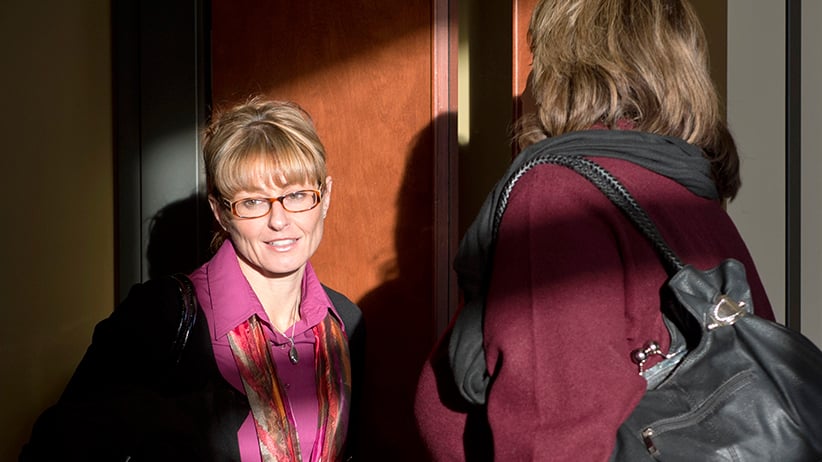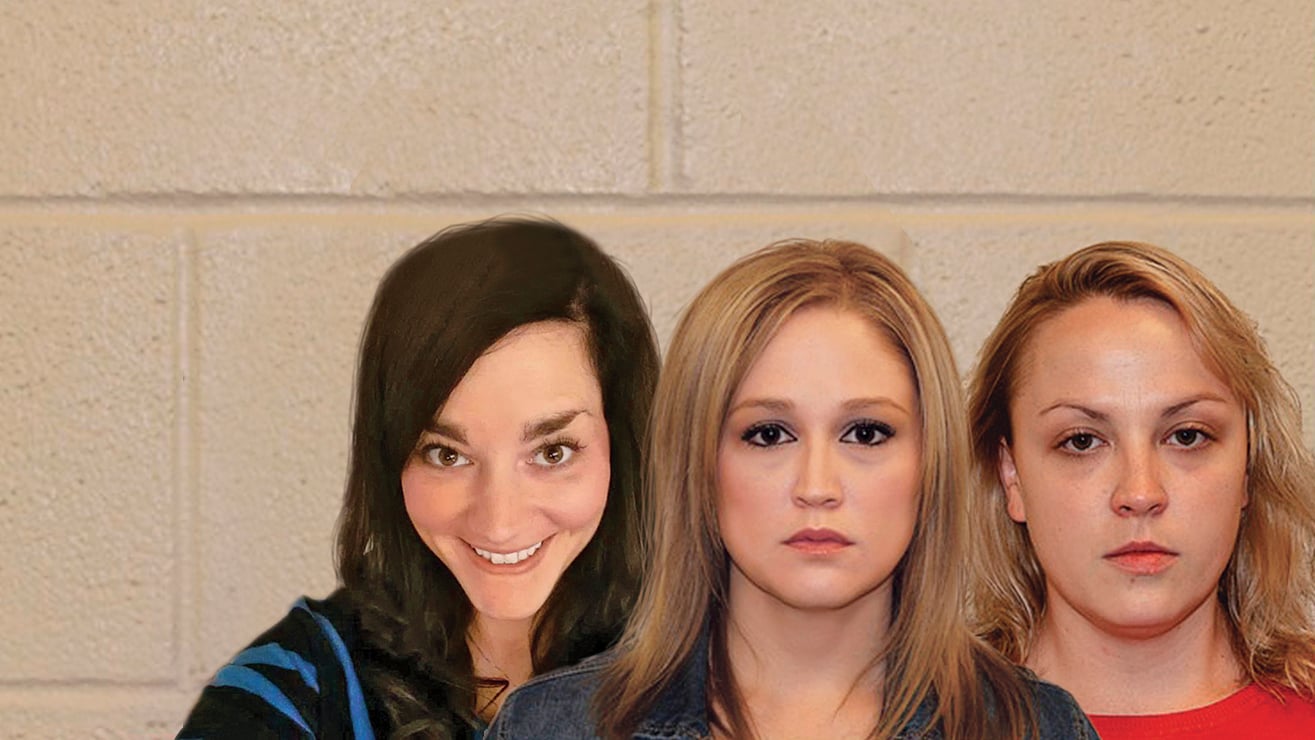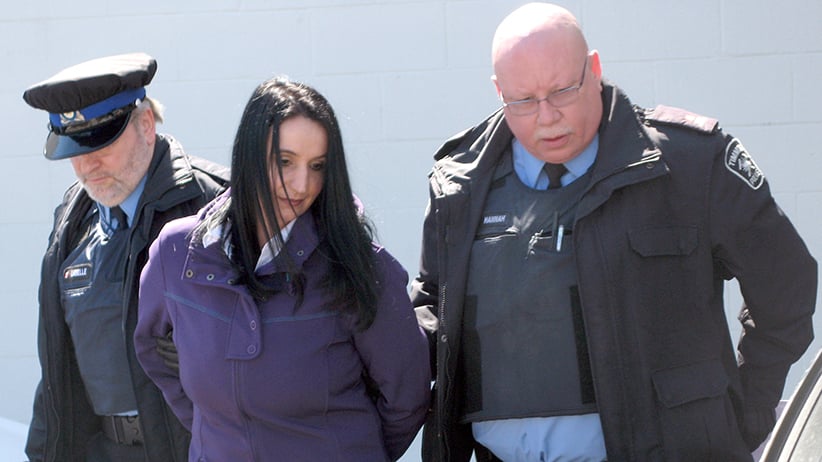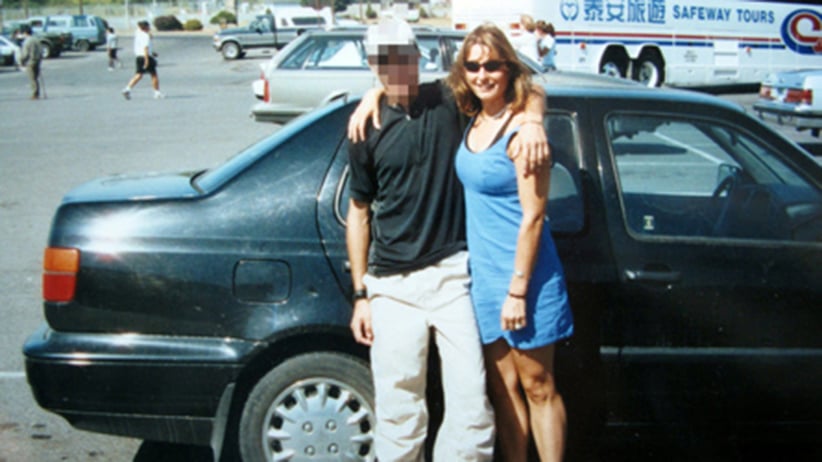Female teachers: The sex offenders no one suspects
From 2014: How the treatment of female teachers who sexually exploit male students reflects society’s legal and cultural double standards
Suite du procès de Tania Pontbriand ex-professeure d’éducation physique de Rosemère, accusée d’agressions sexuelles sur un mineur sous son autorité, au Palais de justice Saint-Jérôme, près de Montréal en ce vendredi 30 novembre 2012. Joel Lemay/QMI
Share

In August [2014], Quebec Justice Valmont Beaulieu stated the obvious when he addressed the double standard in the treatment of teachers who have sex with students: “The sexual exploitation of a male adolescent by a female teacher must be punished just the same as a male posing the same actions toward a female adolescent,” he said before sentencing Tania Pontbriand to 20- and 18-month jail terms to be served concurrently, plus two years probation. The former high school gym teacher from Rosemère, Que., had been found guilty of sexual exploitation and sexual assault of a male student with whom she had a two-year relationship.
The trial made headlines internationally. Its details, by turns tawdry and disturbing, revealed how the then 30-year-old Pontbriand acted as mentor, confidante and sexual aggressor to the 15-year-old. She gained the trust of the teenager, whose identity is protected by a publication ban, when they exchanged intimate details during a 2002 school cycling trip. He described the pain he felt after his parents’ divorce; she told him her marriage was a mistake. When the student returned home, he told his mother he had a “new best friend.” Pontbriand initiated sex with the boy soon after on a private trip approved by his mother to help him with his problems; it was the first of some 300 sexual liaisons that took place on school trips, private getaways, at his home and her home. The teacher bought the boy a cellphone after his mother tried to shut down communication between the two. Evidence shown to the court included coded messages left in the student’s locker and gifts such as the engraved dog tags the teacher gave the student after their first sexual encounter: “BFF. Best Friends Forever. 19-05-02.”
In a written statement, the student stated that Pontbriand ended it after he entered CEGEP, saying she’d met someone new. He went to police in 2007 after being expelled; later he claimed the relationship left him depressed and suicidal. The victim, now in his 20s, said a psychiatrist helped him understand he’d missed out on normal dating rituals. Pontbriand, now a mother of two, alienated him from family and friends, he said, “so as to satisfy her own egotistic and sexual desires. I was far too naive at the time to recognize her lies and manipulation.” The judge agreed: “The court is convinced that the accused used the victim to satisfy her own sexual needs, thus exploiting the victim’s naïveté, his lack of maturity, his dependence and his trust.”
Canadian law is clear that a minimum jail sentence must occur in sexual charges involving children, meaning those under age 16, the age of consent; when an adult is in a position of authority or trust, however, that age rises to 18. Yet a cultural double standard persists in attitudes toward and legal treatment of male and female teachers who sexually exploit students. Men routinely face jail time. Women do not. Sentencing in the Pontbriand case, as well as the two-year prison term given former Calgary school teacher Jennifer Mason in July for sexually exploiting a 16-year-old, recognize the severity of the crime. Yet they’re exceptions.
In April [2014], Kim Gervais, a 37-year-old former elementary school teacher in Timmins, Ont., was given seven months in jail and two years of probation for “abhorrent” breach of trust after pleading guilty to three counts of sexual interference and one count of inviting for a sexual purpose involving four male students who were 12 and 13 at the time. Conditional sentences are common. In March, 59-year-old Deborah Marion Ralph, a former Langley, B.C., elementary school teacher, avoided jail after pleading guilty to sexual interference with a student who was 11 when a three-year relationship began in 1998; Ralph was 44. The Crown called for three years incarceration for “egregious breach of trust.” Ralph received 18 months house arrest, six months curfew and community service.
The entrenched belief that men are propelled by lust, women by emotional need, shadowed Ralph’s case, as it does others involving female teachers. A psychiatrist for Ralph’s defence reported the former teacher suffered from “teacher-lover” syndrome, a clinical term dating to the late 1980s to describe teachers, usually female, who believe they’re in a consensual romantic relationship with students. Ralph’s feelings for the boy grew out of a desire to help others, the court heard; she equated her feelings with “young love,” and she connected with the boy better than she did with her husband of more than 20 years. Crown counsel David Simpkin presented a more nefarious scenario: “[Ralph] appears to be bored, looking for some spice in her life and chose the victim,” he said. “She doesn’t appear to have any insight into the harm she has caused.” Justice Selwyn Romilly was sympathetic to Ralph, concluding the grandmother didn’t pose a danger to the community and shows “considerable remorse.”
When a male is a victim of a female, society doesn’t take it as seriously, says Robert Shoop, a professor of education law at Kansas State University and an internationally recognized expert on sexual harassment and abuse prevention in schools. A male having sex with a minor child is recognized as a horror, which of course it is, he says. “But in cases where a female had sex with a minor boy, there have been many examples of judges saying, ‘Where’s the harm here? He bragged to his friends about it, how could he be hurt?’ ” Judges tend to reflect community values, says Shoop, and generally [in the U.S.] judges are over 50 and male. One of those values, he says, is that women are powerless and need to be protected from sex-addled males, whatever their age.
Attitudes are shaped too by a popular culture that celebrates “MILFs” (“mothers I’d like to f–k”) and dismisses sexually voracious older women as “cougars.” Male teachers who have sex with underage female students are viewed as statutory rapists or creeps; women who do the same are perceived as doing the boy a favour or providing a rite of passage, evidenced by the inevitable “Where was she when I was in high school?” cracks.
“When a woman is involved, the language is different,” says clinical forensic psychologist Franca Cortoni, a professor at Université de Montréal who studies female sexual offenders, a field of research in its infancy. Female teachers who sexually exploit students, usually male, is one of three known categories of female sexual offender, Cortoni says. (Others are women who sexually abuse a child or teenager with another adult, often a partner, and women who abuse young children, usually under their care.) Female sexual offenders have always existed but have not been studied until recently, says Cortoni, the co-editor of Female Sexual Offenders: Theory, Assessment, and Treatment, published in 2010. “They don’t fit with society’s views of what women are supposed to be like.” They comprise only four to five per cent of all sex offenders, she reports; women were behind one to two per cent of all sexual crimes reported to police in Canada between 2000 and 2010.
Cortoni hasn’t studied female teachers specifically, she says: “I haven’t been able to get data.” Canada’s national sex-offender registry doesn’t provide gender breakdown for “privacy reasons.” A recent freedom of information search in Wales, however, showed female sex offenders in that part of Britain were the fastest growing category, more than doubling from 78 in 2009 to 193 in 2012 (the number of male sex offenders rose 67.5 per cent from 3,655 to 6,122). We’re just beginning to understand sexual abuse by female teachers and its consequences, says Shoop, who calls it “abhorrent behaviour that’s epidemic.” People don’t appreciate how frequently it occurs, he says: “The conversation is probably where the abuse of children by priests was 10 years ago.”
The sensationalized template for the female-teacher-and-male-student relationship remains mired in the decades-old spectacle of California teacher Mary Kay LeTourneau, a married 34-year-old mother of four who was jailed in 1997 for second-degree rape of her 12-year-old student, Vili Fualaau. LeTourneau was reincarcerated after breaking probation; police found her having sex with Fualaau in her car. The couple, who would have two children and marry, turned their “illicit love” into an industry with a tabloid-ready happy ending: Entertainment Tonight aired their 2005 wedding as an “exclusive,” they co-authored a book, Only One Crime, Love, and hosted “Hot for Teacher Night” at a Seattle club.
Media, along with screenwriters, are complicit in shaping attitudes, says Shoop, who points to criminal behaviour being referred to as a “steamy affair,” or rape referred to as an “inappropriate relationship.” It’s a confusion writ large culturally: Netflix categorizes A Teacher—a very bad movie about a sexual relationship between an unhinged young female high school teacher and her male student—under “romance.”
Over the past year, we’ve seen a barrage of allegations and stories involving female teachers having sex with students. This month, the Internet exploded when two Louisiana teachers, Shelley Dufresne, 32, and Rachel Respess, 24, were arrested for “carnal knowledge of a minor,” for allegedly engaging in a ménage à trois with a 16-year-old male student after he bragged about it. In early October, 44-year-old Ottawa teaching assistant Kathy Kitts was charged with a series of felonies stemming from allegations she conducted a two-year relationship with a male student, starting when he was 15. And last week Charlotte Parker, a married 32-year-old British teaching assistant, was given a 12-month suspended prison sentence after admitting to a two-year sexual relationship with a male student that began when he was 14.; Parker threatened suicide after the teenager’s parents found out.
The unspoken assumption among researchers is that cases involving teachers are under-reported, says Cortoni. It’s believed boys self-disclose more than girls while the relationship is ongoing, says Shoop—“they’re pretty excited and proud of it.” Still, generally only five to 15 per cent of people who are abused ever tell anybody, he says.
Public records of provincial bodies governing teachers provide only a glimpse of a bigger story. Disclosure is uneven: Ontario and B.C. provide disciplinary actions online but other provinces, including those in the Maritimes, do not. Gabrielle Barkany, spokesperson for the Ontario College of Teachers, says there has been no increase in female teachers’ licences being revoked for sexually related misconduct in recent years: “Our statistics do not indicate an increase or a specific trend.” Yet many cases involving teachers, both male and female, don’t come to trial or public scrutiny. Of the 32 teaching licences revoked in Ontario in 2013 by the college, 28 were for sexually related misconduct; of the 28, only one was female. Ten of the 15 revocations in 2012 were for sexually related misconduct; three involved female teachers. Of those four women over the two years, only one faced criminal charges: high school teacher Jill Sparks of Whitby, Ont., was sentenced to 45 days in jail and one year of house arrest in 2009 after pleading guilty to sexual interference and assault of a 14-year-old boy.

Schools also can appear to ignore allegations, revealed in the 2013 trial of former teacher Bonnie McLachlan of Prince Albert, Sask., who was found guilty of sexually exploiting a 15-year-old in 1993-94; she avoided jail, instead receiving 18 months of house arrest, but was allowed to keep working. The former student went to authorities in 2010. As recounted in the Crown’s failed appeal for a harsher sentence, the administration of Queen Mary school was notified of McLachlan’s relationship with the student at the time by teaching assistant Wanda Kent, who reported that McLachlan told her she and the student were having sex in her car. McLachlan’s behaviour was even more flagrant: she was seen rubbing up against the Grade 9 student at his locker and kissing him in a hot tub on a school trip.
But Kent would be the one professionally sidelined; she was assigned to the photocopy room and eventually left teaching altogether. McLachlan, on the other hand, was suspended with pay before landing at another school. She taught until 2008.
Women are given more lenient sentencing than men, says Shoop, who has served as a forensic expert in hundreds of sexual abuse cases in the U.S. “My experience has been that females get time served and probation, where men get 15 years for the same offence,” he says. A 2012 University of Michigan study, “Estimating gender discrimination in federal criminal cases,” found a gender divide in sentencing generally in the U.S.: men received 63 per cent longer sentences on average than women, and women were twice as likely to avoid incarceration if found guilty. Two decisions involving former Oregon high school teachers, found guilty of having sex with students earlier this year, bear this out. Denise Keesee, 39, received 30 days in jail and five years probation for two counts involving a 16-year-old male student. In another jurisdiction, 56-year-old Charles McLauchlin was sentenced to almost 10 years in prison for second-degree sexual abuse and online corruption of a minor involving a 16-year-old female student.
The conditional sentences given both female and male teachers reflect the fact they’re seen to be pillars of the community: public disgrace and being listed on the national sex-offender registry is considered punishment enough. But in sentencing 30-year-old Jennifer Mason to prison in July, Alberta provincial court Judge Sean Dunnigan made clear that it was the court’s duty to denounce and deter behaviour that included “a breach of trust” and “grooming, insinuation into the life of the student and family.”
The trust accorded female teachers is precisely what allows them to offend, the Alberta Crown argued in its unsuccessful appeal of Bonnie McLachlan’s conditional sentence: “It was because of, and not in spite of, her status and the regard parents had for her that she was able to pursue her relationship with ‘S’ [the unnamed student] and abuse him for as long as she did.”

Testimony from cases involving female teachers illustrate the extent to which they earned the boy’s family’s trust: Tania Pontbriand and her husband were given a $5,000 pool by her victim’s family. Students frequently spend time at the teacher’s home, often on the pretext of babysitting. Pontbriand’s victim spent time with the teacher and her husband. The Deborah Marion Ralph trial revealed the teacher “groomed” the 11-year-old—paying him to clean her pool, taking him on outings, shopping for him, and having him to her house for sleepovers. Similarly, Jennifer Mason began contact with her victim when he was 14; she waited until he was 16 before they had sex.
Teachers’ behaviour in many cases oscillates between cold calculation and that of impetuous, immature adolescents. Mason and her victim watched Disney movies after their motel-room trysts. Pontbriand signed an email “your friend 4eva.” The teachers, often married with children, behave in a reckless manner, exploiting the power imbalance with a less-experienced, besotted partner. British teaching assistant Charlotte Parker shared 3,000 WhatsApp messages with the student during their relationship.
Testimony from teachers’ disciplinary hearings also reveals a stunning lack of judgment—and lack of professional boundaries: Toronto teacher Nathalie Champagne lost her licence in 2012 for violations that included engaging in “acts of a sexual nature” with a 16-year-old while his friends watched on video conference. In 2013, Ottawa teacher Andréane Hélène Cadieux lost her licence for inappropriate behaviour that included “exposing her breasts” during an online chat with a student. School boards routinely provide guidelines on “appropriate” social media interactions. The Ontario College of Teachers advises teachers against even becoming Facebook friends with students, spokesperson Barkany says.
Shoop, author of the 2003 book Sexual Exploitation of Students: How to Spot it and Stop It, says that grooming entails identifying susceptible students: “You don’t know whether it’s intentional—that this person is setting the kid up—or that she’s flirting, sending gifts and texts, then crosses boundaries. Either way, the kid is generally flattered.” He has heard teachers report they fell “in love”: “I’ve seen 40-year-old women writing the boy’s name on her hand like they’re teenage girls,” he says. “I’ve not had many cases of female serial predators, though there have been women who’ve had sex with more than one child or who had sex with several children at the same time.”
Cortoni rejects the term “predator,” coined by American lawmakers in the 1990s. Canadian experts in the field don’t use it, she says, noting it’s not accurate or useful: “When you think of predators, you think of monsters—the Paul Bernardos. But 85 to 90 per cent of sex offenders are people the victim knows and loves—someone who makes them feel loved. That’s what people forget.”
The term creates dissonance for the victim, she says: “There’s this idea that boys want to go to bed with an older women—it’s a cultural fantasy. But if the kid is not comfortable, how does he report—how does he go against these messages that it’s a cool thing to have sex with an older woman?”
Theories about the female sex offender remain tentative. What is known, Cortoni says, is that female and male sex offenders differ in significant ways: where men have difficulties establishing intimate emotional relationships and show lack of concern for others, women have the reverse problem: “They’re over-dependent.” Another key difference, she says, is that female sex offenders don’t see all children as sexual beings the way male sexual offenders do, but they do see their own victim in a sexual way. Absent is any concept of ethics or boundaries or professionalism, says Shoop. But students, too, haven’t been educated as to what is acceptable or unacceptable behaviour, he says. The 16-year-old who claimed to have a threesome with his teachers was shocked to learn they could go to prison.
The notion that teenage boys can be victims of women runs against an entrenched cultural grain: “The belief is that all teenage boys want sex—an assumption that can be pretty much be verified—so therefore they can’t be raped or that nothing that happens to them could actually do harm,” says Shoop. Males stop being seen as victims when they hit adolescence, says American psychologist David Lisak: “We recognize that male children can be abused, but when boys cross some kind of threshold in adolescence and become what we perceive to be men, we no longer want to think about it in this way.” The fact that boys are prone to locker-room boasting also figures in judicial decisions. That was apparent in the case of Mary Gowans, a former Toronto French teacher acquitted in 2012 of charges of sexual involvement with her former Grade 8 student; the Crown presented evidence that Gowans exchanged more than 2,000 texts with the former student, some after midnight and on holidays. Judge John McMahon said he had “trouble” with the timing of the texts, before dismissing the case in part because of inconsistencies in the boy’s testimony: “I was left with the impression he simply had a schoolboy crush on Ms. Gowans,” and fabricated tales to “impress friends.’’
Men bristle at the sexual victim label: On the tabloid TV show Inside Edition, Vili Fualaau denied he’d been preyed upon: “I’m not a victim . . . I’m not ashamed of being in love with Mary Kay.”
Recognition that men can be sexual victims has been slow. A 1998 U.S. National Institute of Justice survey found one in 33 men will be the victims of sexual violence in their lifetimes; the FBI didn’t update the legal definition of rape to include men until 2012. Controversial “made to penetrate cases” are reframing the subject: in 2013, Chicago resident Cierra Ross was charged with picking up a stranger in her car and forcing him to have sex with another woman at gunpoint. New data from the U.S. military is also reshaping perceptions. A Pentagon report found reporting of sexual assault in the military rose 50 per cent between 2012 and 2013, in part due to increased awareness of sexual trauma; still, it’s believed adult men disclose at a lower rate than women. Incidence is being revealed in other ways. The 2014 documentary It Was a Woman, by Canadian Cherri Low Horn, who was abused by a woman as a child, focused the lens on female offenders. In it, Ottawa social worker Rick Goodwin, co-founder of the Men’s Project counselling group at the YMCA, reports that between one-third to one-quarter of the men he sees were sexually abused by a woman.
The situation can be especially complicated with children, says Shoop: “It’s difficult for people to understand that a boy, like a girl, can willingly participate, even enjoy the experience, but still be exploited,” he says. “We assume that children have to perceive damage for damage to have occurred; but there is long-term damage to both males and females. The child becomes sexualized; he sees himself as a sexual object and many times has a difficult time developing appropriate relationships with appropriately aged people.” Testimony from male victims provides a glimpse of the aftermath. In a statement, Deborah Marion Ralph’s victim said he has lost time at work and required expensive therapy: “Depression has been a large portion of both my child and adult life. It has caused me to self-direct my anger, wreaked havoc on relationships, and hindered my career.” The student in the Tania Pontbriand case reported being confused and isolated from friends and family; he remains estranged from his mother. The furtive nature of such relationships can also isolate a student from friends and family, says Shoop: “They become co-conspirators.”
“I never thought that I’d be sleeping with a 30-year-old married teacher of mine,” Pontbriand’s victim said. “I think I was still in denial, pretending it was a normal relationship.”
Testimony shows teenage boys to be emotionally vulnerable as well. The boy involved with Denise Keesee was convinced they would marry. The teenager who Jennifer Mason exploited claimed he still loved her and would go to jail for her. He denied being victimized; Judge Dunnigan disagreed, saying the teenager could be a “a ticking time bomb.”
Retired NHL player Theo Fleury, who was sexually abused as a boy by a male coach, spoke of the unseen damage when he publicly denounced the conditional sentence given former Saskatchewan teacher Bonnie McLachlan, calling it “a slap on the wrist.” “The judge was showing sympathy toward somebody who took an undeveloped adolescent and decided that it was OK to have sexual intercourse with him,” Fleury said, criticizing the judge’s statement that he “could see no physical damage in the boy.” Fleury says the judge “silenced so many people that have been through this.” Jokes on late-night TV have the same effect, says Shoop: “That mocking is why males don’t come forward.”
Even after proven guilty and sentenced, female teachers can be defended, evident on a “Support Tania Pontbriand” Facebook page which attracted more than 150 members, many of them former students. “Unbelievable,” wrote one. “This was probably the best teacher I had in my entire life. It’s funny to see this blown out of proportion just because she was a teacher. No one would have bat[ted] an eye otherwise!” Such statements reveal how much we have to learn, says Shoop. “You hear these women described as an ‘excellent teacher,’ ” he says: “But if you molest children, you can’t be an excellent teacher.”
